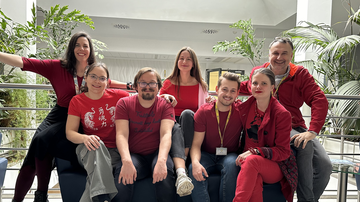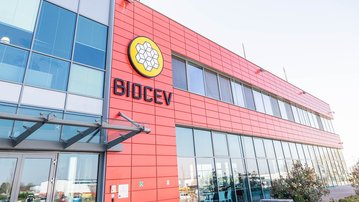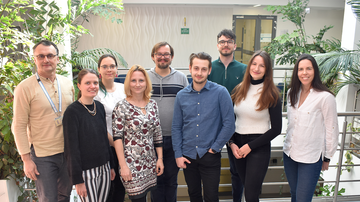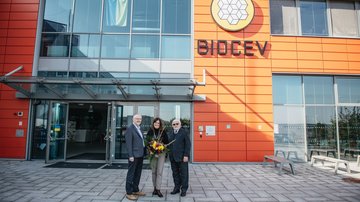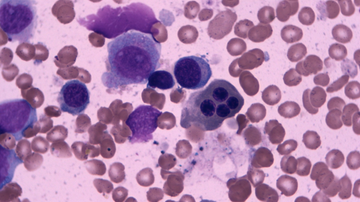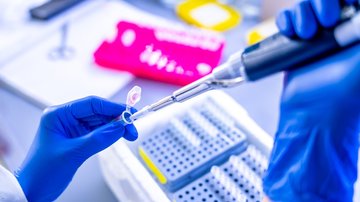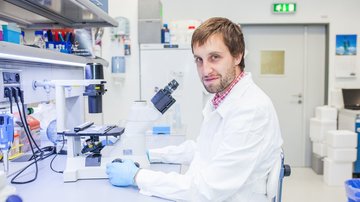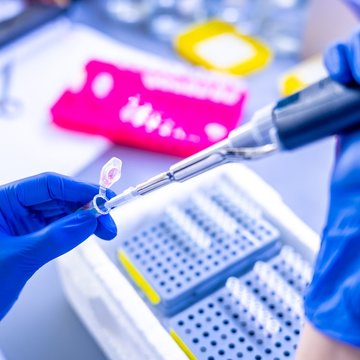
Laboratory of Haematooncology and Stem Cells
Protein oxidation: an added layer of regulation during blood stem cell development
Dr. Kristýna Pimková (1st Faculty of Medicine, BIOCEV) in collaboration with scientists from Lund University participated in a study, which found that protein oxidation forms an additional layer of regulation during the development of fetal stem cells and may play a role in the development of leukemia. The results are now available in the journal, Redox Biology. The most important findings are summarized by Alexis Luis in the article "Protein oxidation: an added layer of regulation during blood stem cell development".
The human body is made up of trillions of cells and within each are proteins - large, complex molecules that play many critical roles in the body. They are the machinery responsible for carrying out the important tasks that allow our cells to operate, survive, differentiate, and divide – every minute, of every day.
When these processes are interrupted, this poses a serious threat to human health. One of the ways in which this happens is when proteins become oxidized due to oxidative stress, causing an imbalance in a cell’s equilibrium, or redox homeostasis. This imbalance can affect the structure, activity, and function of proteins within a cell and is involved in the development of several diseases, including cancer. For example, the protein make-up and the oxidative state of proteins in blood stem cells can regulate both the type of blood cell they become and their susceptibility to developing blood cancer, also known as leukemia.
Picture: Using redox proteomics, we identified proteins that are targets of oxidative changes in fetal and adult blood stem cells. Oxidation of these proteins forms an additional regulatory layer during fetal hematopoietic stem cell development and may play a role in the development of leukemia.
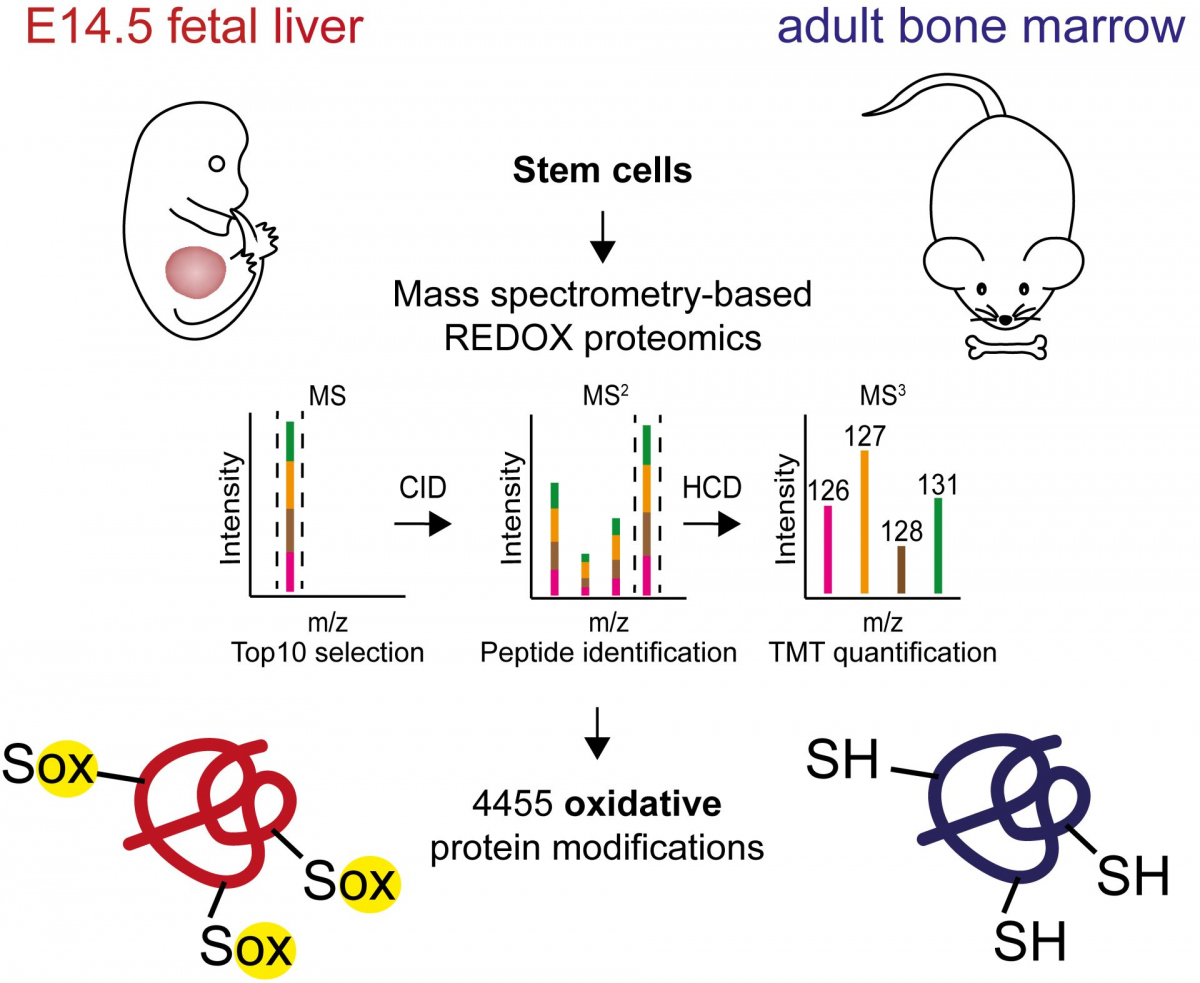
Dr. Jenny Hansson, a researcher at Lund University, has been working with her research group on Proteomic Hematology, to identify the proteins that regulate hematopoiesis, or blood cell development, and compare their activity in utero and adults. “We know that there are large differences functionally in the blood stem cells of fetuses and adults and what these cells can develop into,” explained Jenny. “By exploring how changes in the proteins of fetal and adult blood stem cells differ, we can determine whether this is one explanation for why these cells behave so differently as we age.”
In the group’s latest publication, they built upon their previous findings in this area, using proteomics - the large-scale study of all the proteins within a cell, organ, or organism, at a certain time - mass-spectrometry, specifically adapted to the study of protein oxidation, and special care not to introduce artificial oxidation into their samples. In doing so, the group found large differences in the level of protein oxidation between fetal and adult blood stem cells.
“The level of oxidation of specific proteins in the fetal cells was much higher than in the adult cells. This was originally expected as we knew from our previous findings that fetal cells are not as well equipped in protecting proteins from oxidation, but these differences were much larger than we initially anticipated. What was even more striking is that it was only certain sites within the proteins that sensed an increased oxidative state in fetal cells,” described Dr. Kristýna Pimková, first author of the publication.

Apart from that, the team also uncovered that the proteins which differed in their level of oxidation, were often those involved in fundamental processes in the cells, such as translation, protein homeostasis, and energy metabolism. “One of our conclusions is that those processes which are crucial for the cells they have this fine-tuning, an added layer of regulation, via oxidative modification in fetal cells,” stated Kristýna.
From here, they wanted to understand how changes in protein oxidation among the fetal cells could influence the development and progression of leukemia. “Using an experimental model based on a type of blood cancer that is common among infants we could see which proteins in the fetal blood stem cells were already differentially oxidized. The most interesting being those which changed oxidation upon the initiation of leukemia, as these present potential targets for future leukemic treatments,” stated Kristýna.
The hope is that these findings will not only provide a foundation for clinical applications in the future but also open new avenues for further research. “With this paper, we have pinpointed specific proteins worth further study and will continue working to answer these unsolved questions. The final goal is to find new, age-tailored treatments for young and older patients with leukemia,” concluded Jenny.
Original publication HERE
This study was done in collaboration with the research group on RNA and Stem Cell Biology, led by Dr. Cristian Bellodi.
This work was supported by grants from the Swedish Research Council, The Swedish Childhood Cancer Foundation, the Magnus Bergvalls Stiftelse, the IngaBritt and Arne Lundberg’s Research Foundation, the Royal Physiographic Society of Lund, and the Charles University and General Hospital in Prague Czech Republic and by the Operational Programme Research, Development and Education.
Key Facts
- Oxidation: is the loss of electrons during a reaction by a molecule, atom, or ion.
- Redox Homeostasis: The balance between oxidants and antioxidants in the cell, which is required to maintain a healthy status.
- Oxidative stress: When this balance is disrupted, tilting the equilibrium toward an oxidized state, oxidative stress is produced, which can lead to cell and tissue damage. Oxidative stress is involved in the development of several diseases, including cardiovascular disease, cancer, diabetes, and many others.
- Proteome: all the proteins expressed within a cell, organ, or organism, at a certain time, are referred to as the proteome.
- Proteomics: the large-scale study of the proteome.
- Mass-spectrometry: an instrumental method for identifying the chemical constitution of a substance and the technique used to study the proteome.
Source: Alexis Luis, Kristýna Pimková (published: 13 June 2022), link to original article HERE


